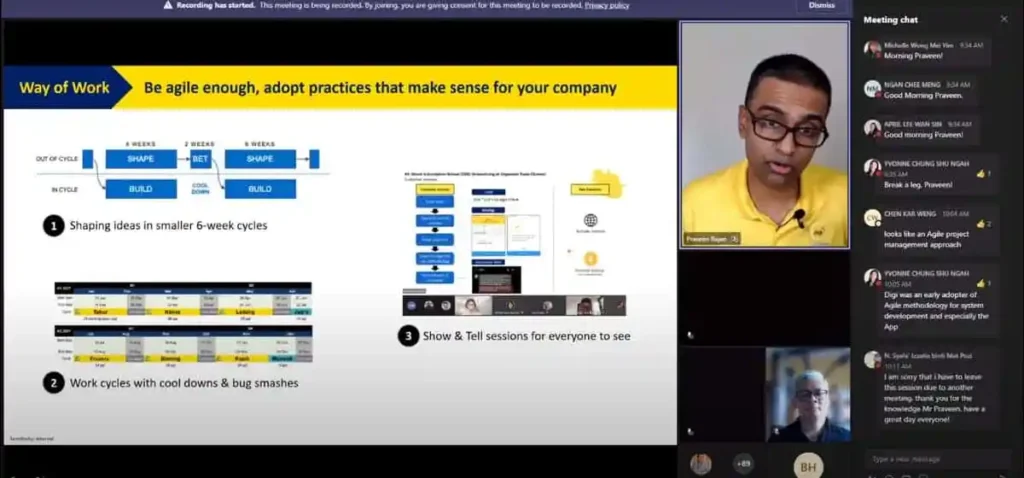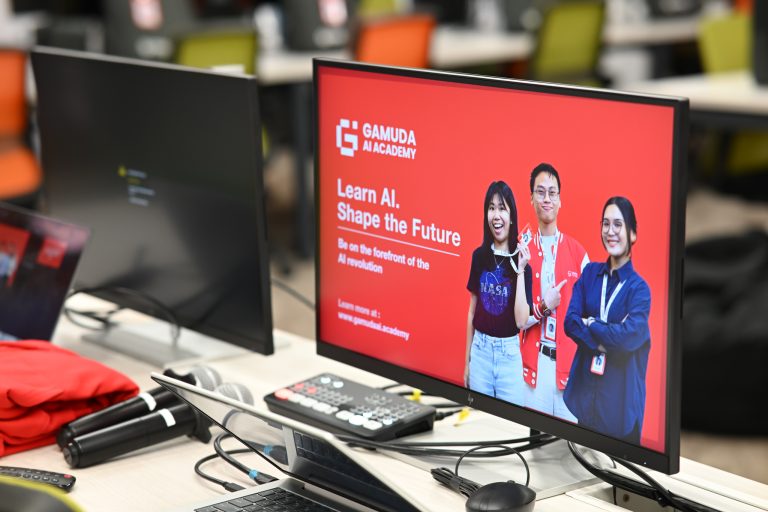On 6 July 2021, the first of GET’s monthly TechTalk series launched with a conversation on transformation with Digi’s Chief Marketing Officer, Praveen Rajan. Hosted over Microsoft Teams, we were joined by 105 participants Group-wide. Titled “Transformation within Context and Constraints”, Praveen spent the first half of his talk presenting the key drivers on thriving amidst an organisation’s context and constraints and the second half in a moderated discussion with panellists from the GET team.
Watch the recap video for some key takeaways from the session!
Transformation? A fancy word
Praveen started by painting a picture of Digi’s illustrious evolution over 26 years and the long haul it has taken to transform and reach where it is today. “Transformation” is often a universal term implying complex efforts and resources. But in Praveen’s experience, successes that come from these “big” efforts were few and far in between. He observed that a lot of the success of organisational transformation comes by simply “improving specific things and how we work [continuously]”.
In the context of Digi, being in a highly regulated industry with a huge customer base meant having an overarching responsibility towards protecting the business. Transformation, or innovation, on the other hand carries with it risks to the business. The question is how do we balance these priorities in tension?
Context & Constraints
By taking a reality check of the context and constraints of one’s team or business needs. Praveen elaborates “transformation” would mean different things to different organisations. For example, Digi in its context as a utility provider wouldn’t gather the same kind of passions and following that a sneaker brand’s customer base would aim for. It takes strong leadership with clarity in the contexts and constraints of an organisation to customise its transformation roadmap. There also needs to be some staying power to make sure long-term efforts come through.
Praveen shared an example in the development of their MyDigi app, where at the very beginning the management decided to go with the path of least resistance, outsourcing the technical aspects to focus on what they do best. Over time, as their products become more diversified and select employees gain competencies, they began to take over the tasks of improving the applications themselves thus upskilling themselves through the process, rather than hiring xperts from the outset.
Intensive ideation – intentional cooldowns – 360° visibility
Speaking of process, Praveen shared that all teams are free to adopt their preferred methodology, as the key value is in the agility of the mindset.

Their overall process however follows an organisation-wide calendar involving intensive periods of shaping ideas (in 6-weeks cycle to suit their “constraints” or best-fit planning horizon), planned “cool downs” or pauses to recoup and allow for more planned executions, and finally, presenting shortlisted projects to the entire organisation through “show and tell” sessions.
“…what we’ve learnt is that the more we show, the more we tell, the motivation of the teams and willingness of the team to do new things skyrocket… and a lot of people suddenly learn the business by doing more things”, Praveen explained.
Managing expectations
We then moved on to a discussion with Ahmad Faiz from Gamuda Land and John Lim from Gamuda Engineering moderated by Joyce Shamini. Relating to Gamuda’s background as a public listed company, Praveen expounded on some of their guiding principles in meeting yearly obligations to shareholders while exploring long-term growth strategies. He adds, apart from keeping everyone from the ground up well in the loop of quarterly targets and margins, it is crucial to keep the innovation team somewhat sheltered from core business demands. This allows the team to respond differently and work towards longer term solutions rather than fixate on day-to-day firefighting.
Another common ground found was in the particular challenge of instilling empathy during this prolonged season of lockdowns and remote working, be it among colleagues or customers. In response, the organisation focused on checking in on its people more via support programs. “…less about fancy stuff but really [focusing] on core human being stuff” as Praveen sums it.
To wrap up, Faiz reminded the audience that the purpose of TechTalks and the GET community is to chart the course and raise the flag high for digital excellence. Just like how Digi took 23 years to transform from solely a telco provider to a digital enterprise, we are all here for the long haul too.




